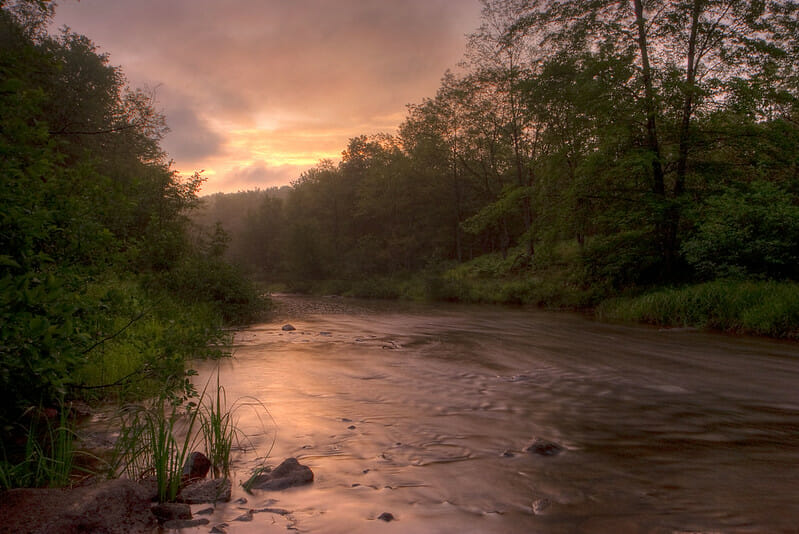
New rule formally restores Clean Water Act protections for small streams, headwaters and wetlands and sets the stage for a lasting “Waters of the U.S.” rule
Contacts:
- Chris Wood, President and CEO, Trout Unlimited, chris.wood@tu.org
- Steve Moyer, Vice President for Government Affairs, Trout Unlimited, steve.moyer@tu.org
ARLINGTON, Va.—The Environmental Protection Agency today finalized a new regulation that will formally restore federal Clean Water Act coverage for many small streams, headwaters, and wetlands that are critical to healthy and functioning watersheds.
The new rule will replace the Trump-era Navigable Waters Protection Rule, vacated by a federal court in 2021, and largely reinstate Clean Water Act protections in place since 1986, with important changes to incorporate recent federal court decisions. It will also set the stage for the EPA to move forward with a new “Waters of the United States” rule, which is being developed with input from a broad group of constituents—tribes, farmers, businesses, conservationists, foresters, communities—and is aimed at settling the long-disputed questions.
“We appreciate the EPA’s hard work to get it right on ‘Waters of the U.S.,’” said Chris Wood, president and CEO of Trout Unlimited. “We have the Clean Water Act to thank for making our streams and rivers healthy, fishable, and swimmable. This rule is a step in that direction, and we’re looking forward to working with the EPA and our partners to put in place a new ‘Waters of the U.S.’ rule that is rooted in science and ensures protection of the small streams and wetlands that provide clean water not just for trout and salmon but also for farmers, businesses, and communities.”
The EPA move this week is the latest in a decades-long debate over which streams, rivers, and wetlands should be protected by the Clean Water Act. In 2015, Trout Unlimited and our partners backed the Clean Water Rule, which was grounded in science and would have confirmed protections for small “ephemeral” and “intermittent” streams, headwaters, and wetlands. That rule was blocked by the courts, repealed by the Trump EPA, and briefly replaced with the Navigable Waters Protection Rule, which offered weaker protections for small streams. In findings published in a peer-reviewed journal, TU showed that half of all waters in the contiguous United States would have been unprotected under the new rule. In the past year, two federal courts in the Southwest have overturned the rule and reinstated rules that had been in place for 30 years prior to 2015. The EPA’s action this week will make it official 60 days after the new rule is published in the Federal Register.
The EPA has been meeting with landowners, farmers, businesses, and conservation organizations, including TU, as it develops a lasting rule that achieves the original goals of the Clean Water Act—making the nation’s waters healthy, fishable, and swimmable.
Meanwhile, the agency is awaiting a ruling next year from the U.S. Supreme Court in Sackett v. EPA, in which a couple in Idaho disputes the EPA’s conclusion that they needed a Clean Water Act permit to build a home on a lot that contains wetlands near Priest Lake.Attorneys for the Sacketts propose an even weaker “Waters of the U.S.” definition than the one developed under the Trump administration and rescinded this week.
Trout Unlimited has been a leader among fish and wildlife groups in defending the Clean Water Act protections for our vital wetlands and headwater streams. We joined an amicus brief in the Sackett case, our fourth amicus submitted in four different courts in defense of wetlands and streams.
###
Trout Unlimited is the nation’s oldest and largest coldwater fisheries conservation organization dedicated to caring for and recovering America’s rivers and streams so our children can experience the joy of wild and native trout and salmon. Across the country, TU brings to bear local, regional and national grassroots organizing, durable partnerships, science-backed policy muscle, and legal firepower on behalf of trout and salmon fisheries, healthy waters and vibrant communities.

